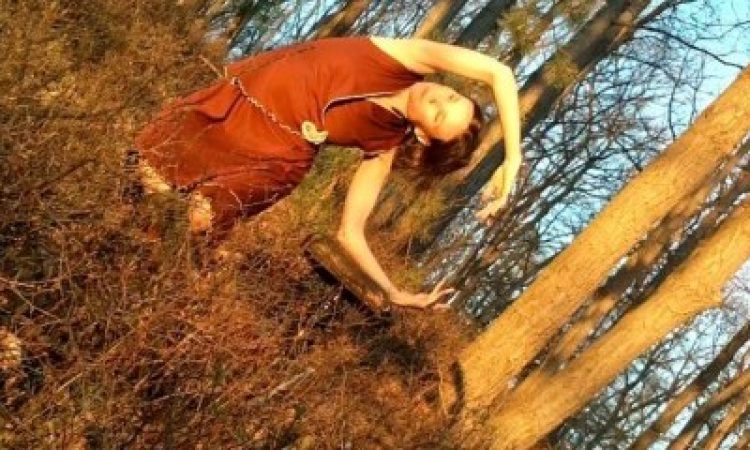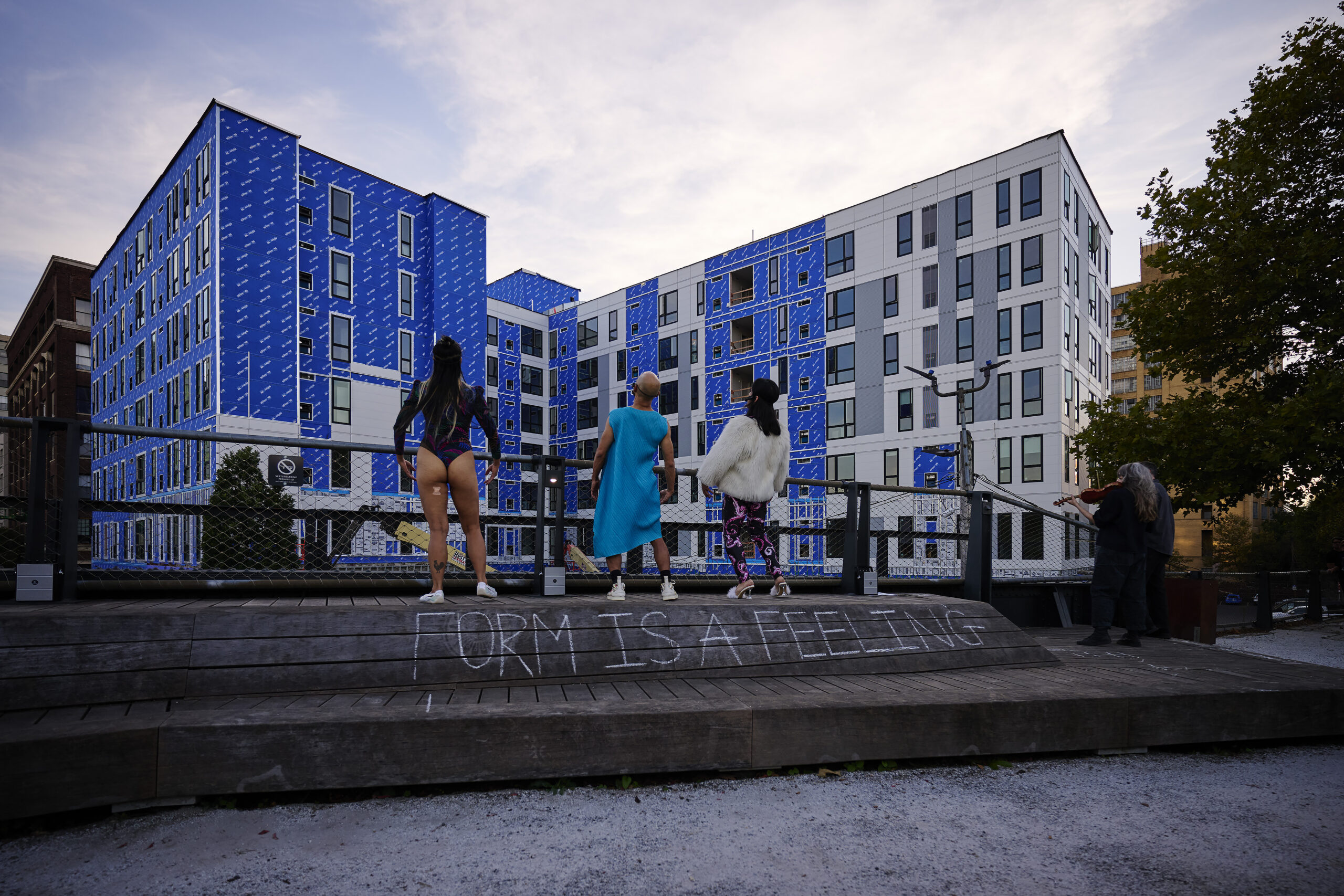Sometimes titles raise expectations that are not always realized in the actual performance. Saudade, thetitle offered in the shared program of Nicole Bindler and PIMA Group at The Performance Garage, is a current example.
“Saudade,” the Brazilian Portuguese word for nostalgic longing, is a term that lingers as a soulful soft breath; the program’s subtitle was “the love that remains.” Bindler’s major contribution to the evening, Pia Mater, or “tender mother” in Latin, is also the poetic anatomical name for the innermost protective layer of tissue around the brain and spinal cord. Pia Mater’s choreography, reworked from a 2007 version, suggested too few times this rich metaphorical material. The work was nonetheless performed with verve and commitment by 18 dancers and five musicians.
The most compelling emotional dynamic of attraction and separation visible in Pia Mater was in an early, entrancing duet danced convincingly by William Henry Robinson and Shelby Lynn Joyce. The two began in close, weighted, caring contact, heads nestled into the other’s neck. They gradually widened their mutual distances while circling each other, maintaining constant eye contact of ambiguous meaning. The slow circling evolved into runs, and at one point was punctuated by sudden leaps high into each other’s bodies and embracing arms, which then just as quickly dissipated into detachment.
The strange and stirring sound of bowed banjo strings began the next section and the ensemble of dancers, in staggered entries and in zig zag formation, moved in two successive waves across the stage. Dancers in the second wave improvised, moving aggressively or awkwardly, stomping feet or falling hard to the floor, or pointing a finger at us that extended from a nose, as in Michele Tantoco’s improvisation. These movement dissonances were reminiscent of the awkward gestures that Bindler herself had performed earlier in the program in I Think Not, an adaptation of a Deborah Hay choreography set by her upon Bindler as part of Hay’s Solo Performance Commissioning Project last year in Scotland. In Bindler’s solo, she lunged thunderously onto the floor, or flared raised thumbs from fists with arms in port de bras position.
The Pia Mater ensemble gathered, and sat impassively at stage right with the same fixed, uncommunicative gaze at the audience. My own “saudade” ended here, as all the following scenes of Pia Mater seemed scattered and incoherent . From their seated grouping, dancers ran randomly with tongues out and flapped their arms, bent at the elbows, to an improvising solo drummer. The ensemble then partied, in a naturalistic scene with rising intoxicated screams, dancers tossing away heeled shoes, then blowing up and punching balloons aloft. This partying was frankly boring to watch.
Breaking out from the party were occasional individual or grouped dancers and musicians, standing while staring into the audience. The only break-out group of any visual interest was a duet of Tantoco and Kristel Baldoz, who alternated leading each other from behind with hands over the eyes of the person being led. The piece abruptly ended after a strong solo by Zornitsa Stoyanova where she extended her long limbs as the fingers of one hand behind her head crept menacingly around her face.
The Saudade titling did resonate, though, in the evening’s accompanying wistful child’s fable, Broken Wings, performed by Melisa Putz and her PIMA Group of music and video collaborators. The prior works, though, had gone on much too long, and some audience members unfortunately did not stay around for the PIMA work. Melisa Putz demonstrated through her new workthat she is one of the most lyrically expressive dancers on the Philadelphia scene today, even when there is a minimum of full-out dancing as there was here.
Providing her own story and text (also printed in a small handmade, illustrated book, available for purchase by the audience), she danced the tale of a bird with broken wings in a forest, who with the advice of a clueless frog, the regenerative sounds of an old oak tree’s Heartwood, the strength of an Ancient Stone, and her own dreams of determination and hope, sought to regain the glory of flight.
Performing largely on a darkened stage, Putz showed a beguiling variety of invention in her arm and hand movements, often extending arms in crossed positions of deformed infirmity, and later, following the well-intended but flawed advice of the frog to fly with wings of twigs and leaves, circled her arms in disjunctive failure. In contrast, she undulated her arms with a lyrical fluidity during her dreams of flying, or when the Heartwood music entered her soul and stirred her into song and movement, as the story related in printed, gothic typeface on a screen on stage. Throughout, she exhibited such total control of every movement and gesture, with occasional pauses of stasis, that she kept us glued to every nuance of the tale.
The music of Thomas Clark on piano and electronics, Shane Leddy on bass, and Morgan Pinkstone, with vocals and guitar, provided a powerful accompaniment of dissonances and minor key edginess, with industrial, electronic and acoustic sounds of threatening excitement. The music was sufficiently original and compelling to be heard in a concert hall in its own right. The on-stage video by the choreographer and Andrew Zajack, was intentionally low tech and raw to create a sense of a distanced, mysterious fairy tale place. But in its recurring often parallel video images of the dancer in a forest, it failed to add much to the performance except in a rare evocative scene where the story has the bird pursuing flight by imagining the sky being reversed with the earth. As the bird “started to pull the sky down towards her until she was resting in the sky,” the text read, the video images looked vertically up through a pane of glass from the ground to a dancing figure surrounded by sky.
The beautifully rendered sadness and longing of Broken Wings earned it a “saudade” farewell.
Saudade with I Think Not, choreographed by Deborah Hay, adapted by Nicole Bindler, and Pia Mater and Broken Wings presented by Nicole Bindler and PIMA Group at The Performance Garage, May 11-13, 2012. No further performances.






